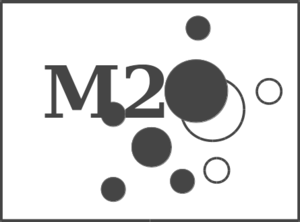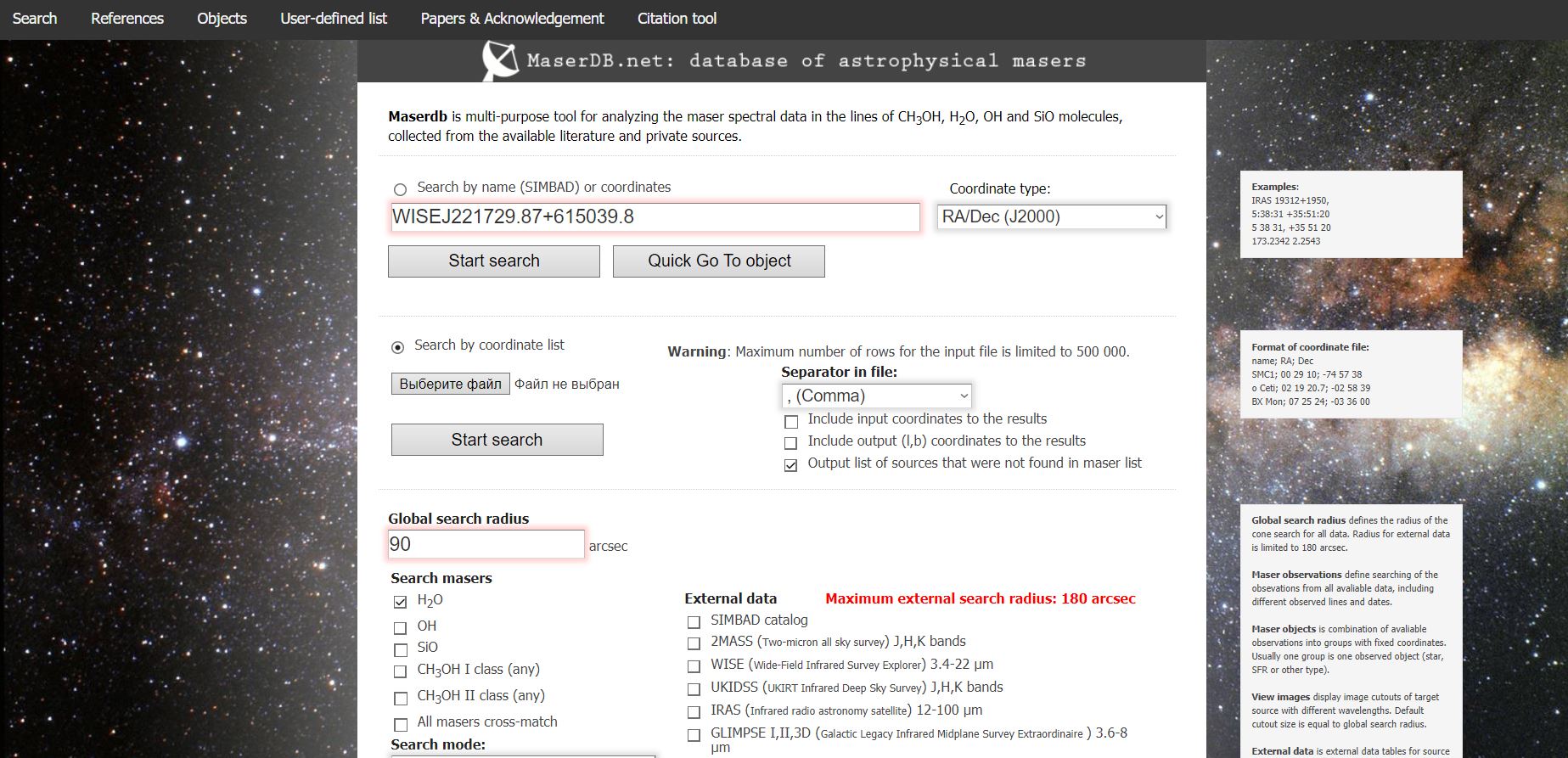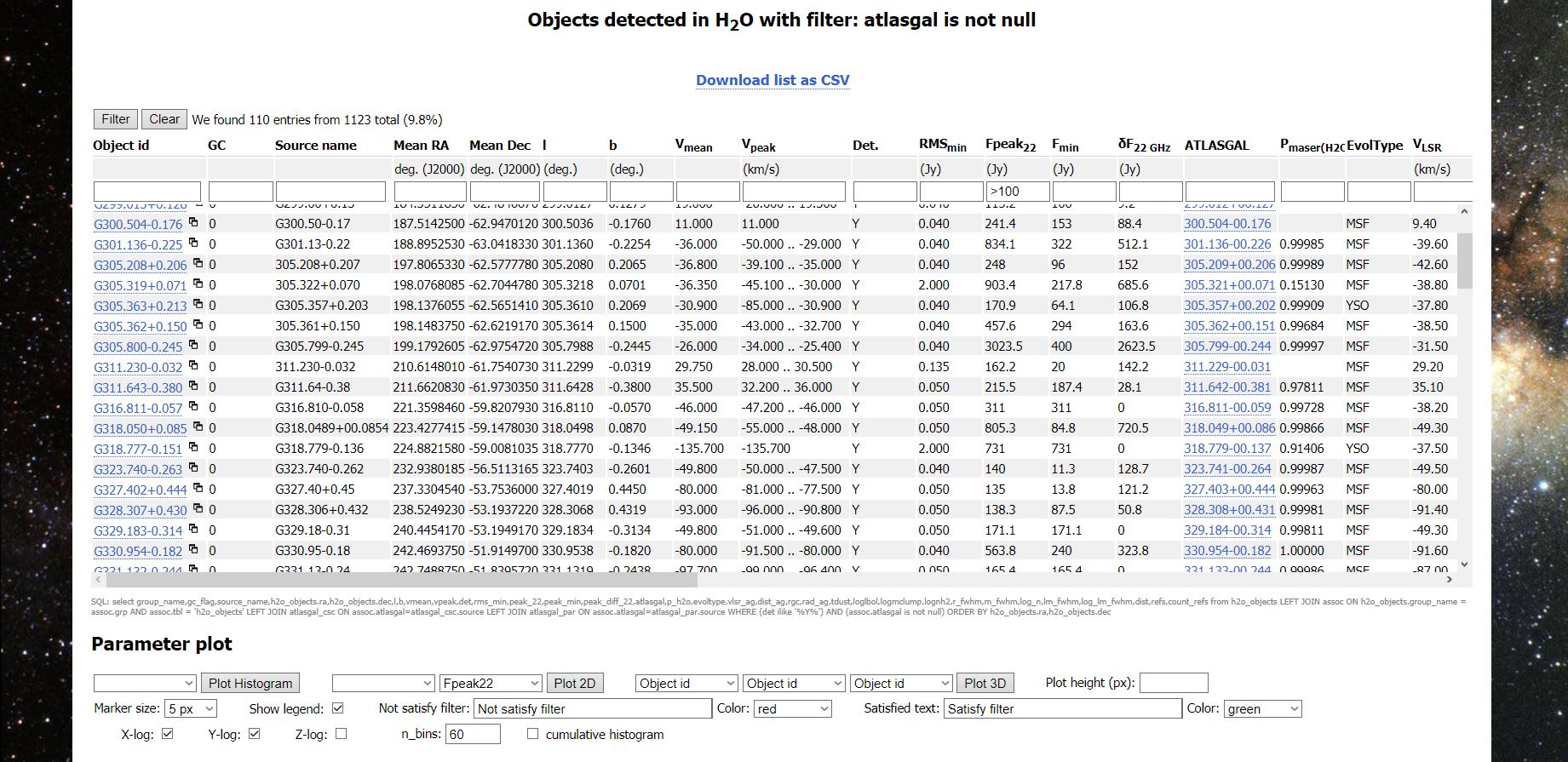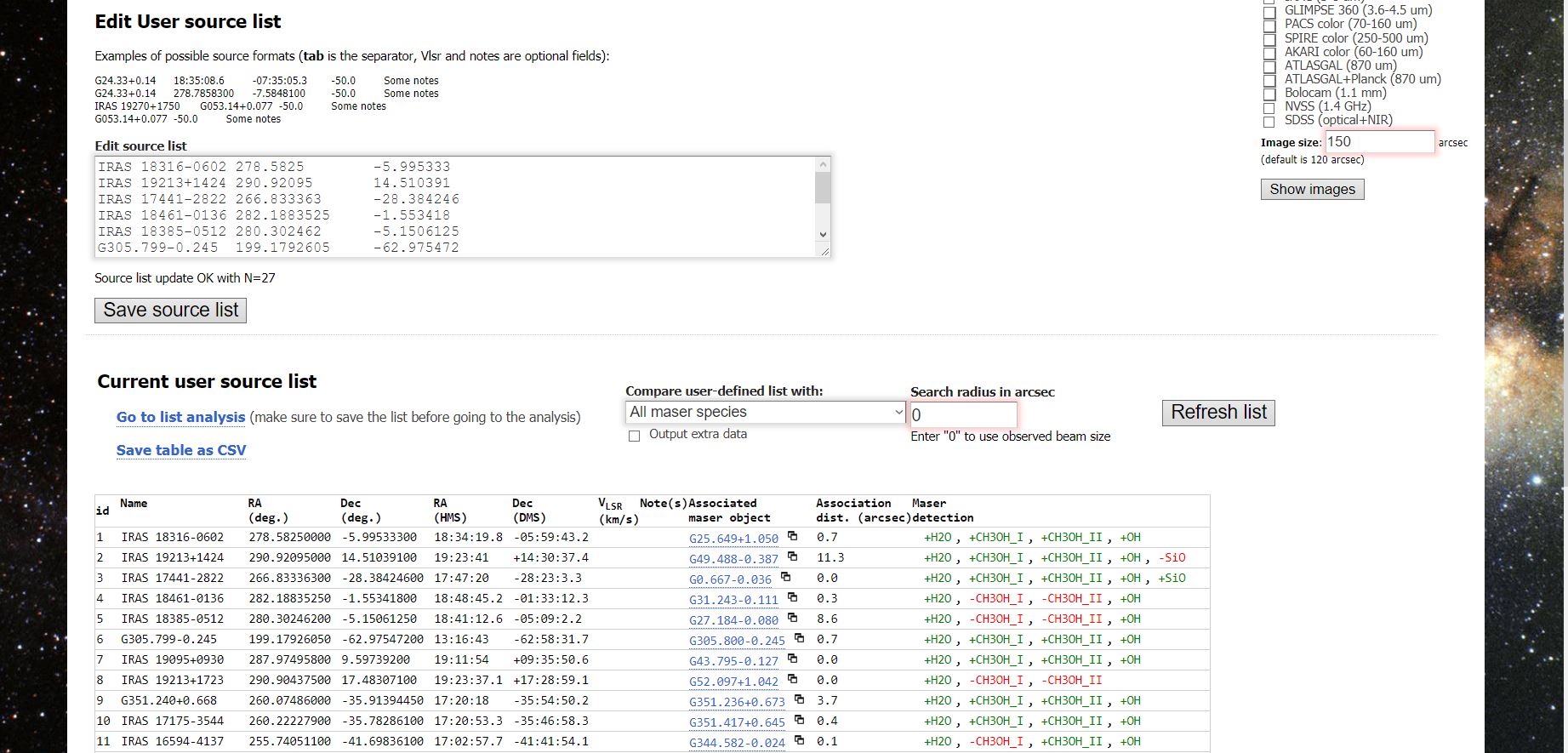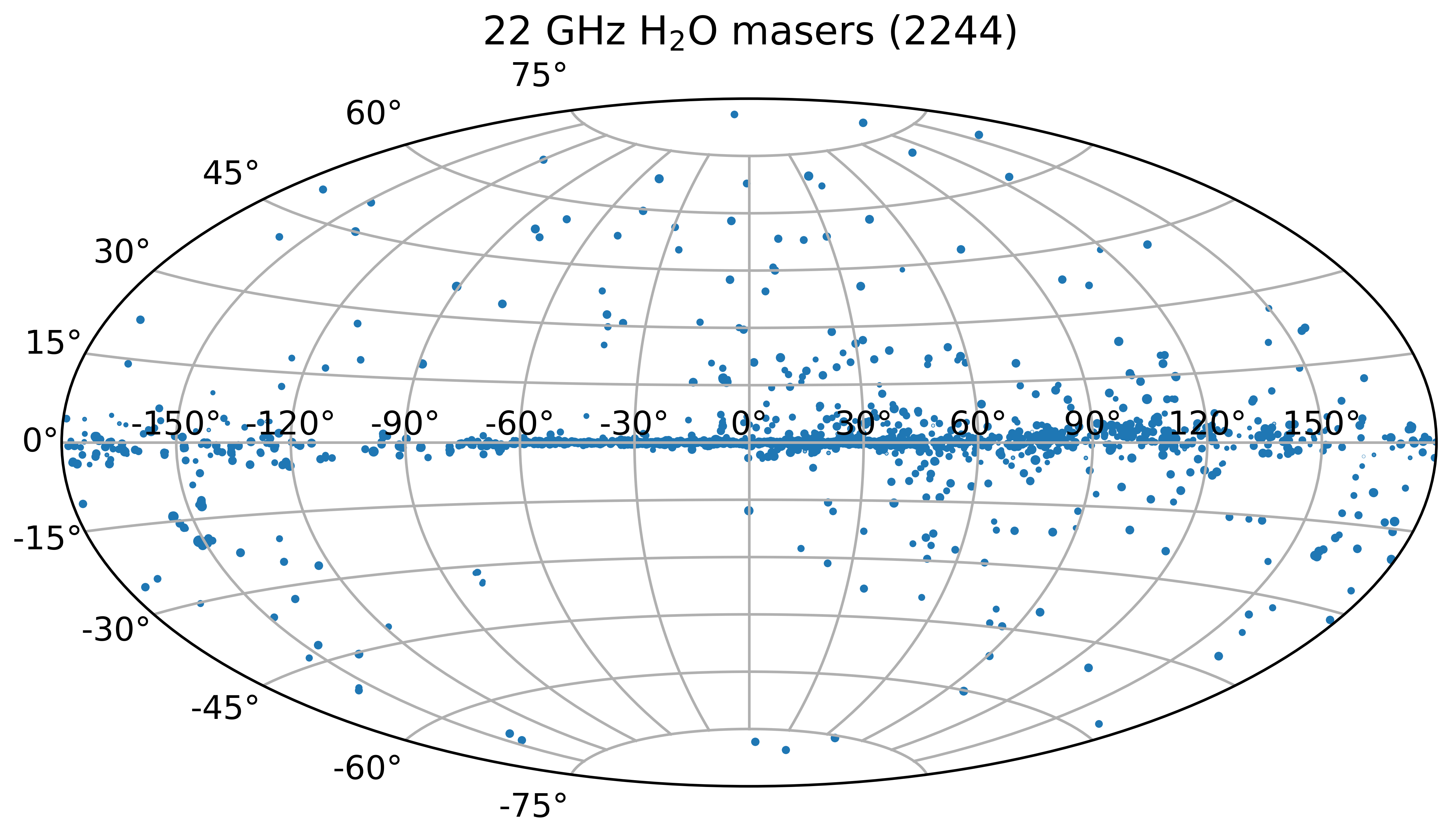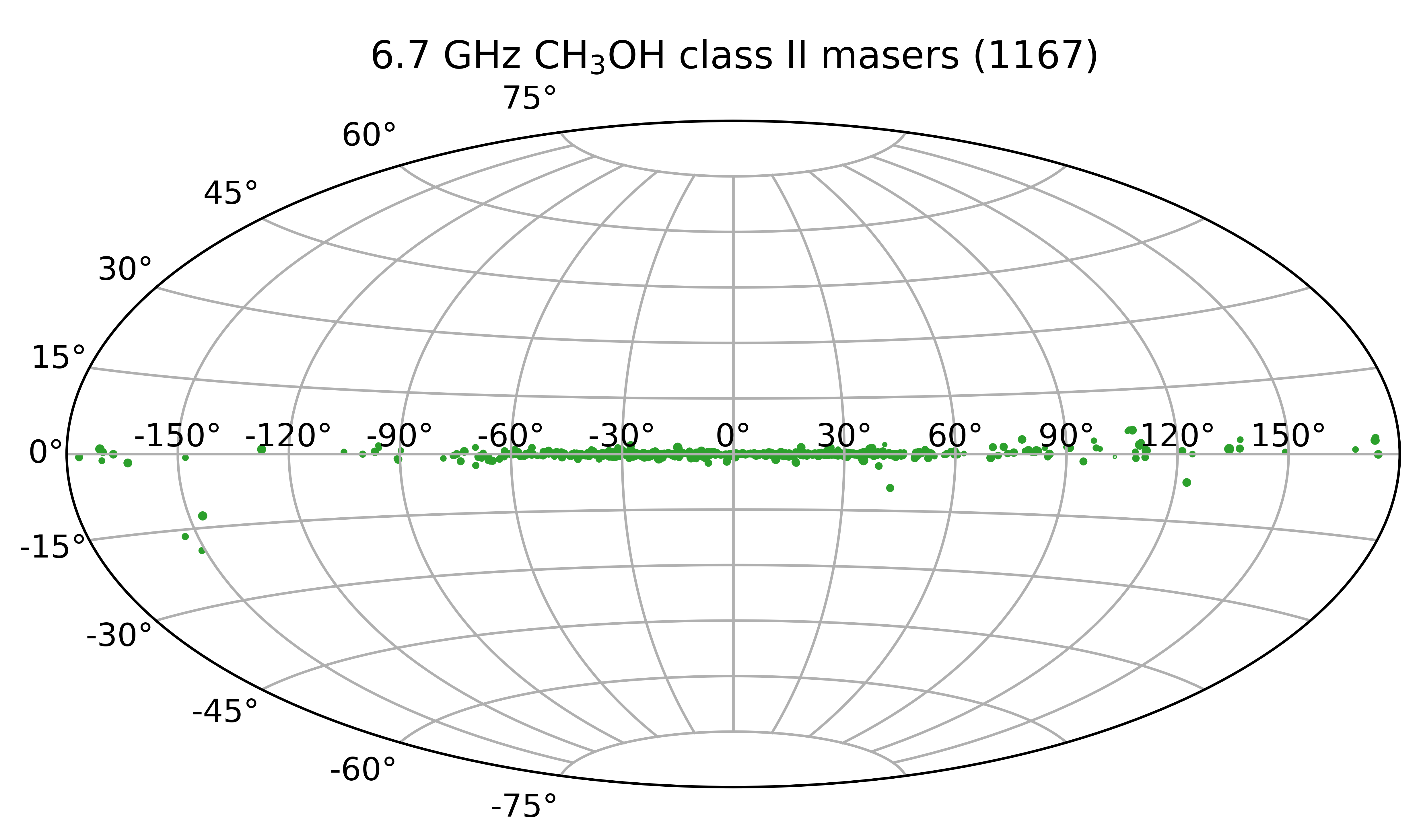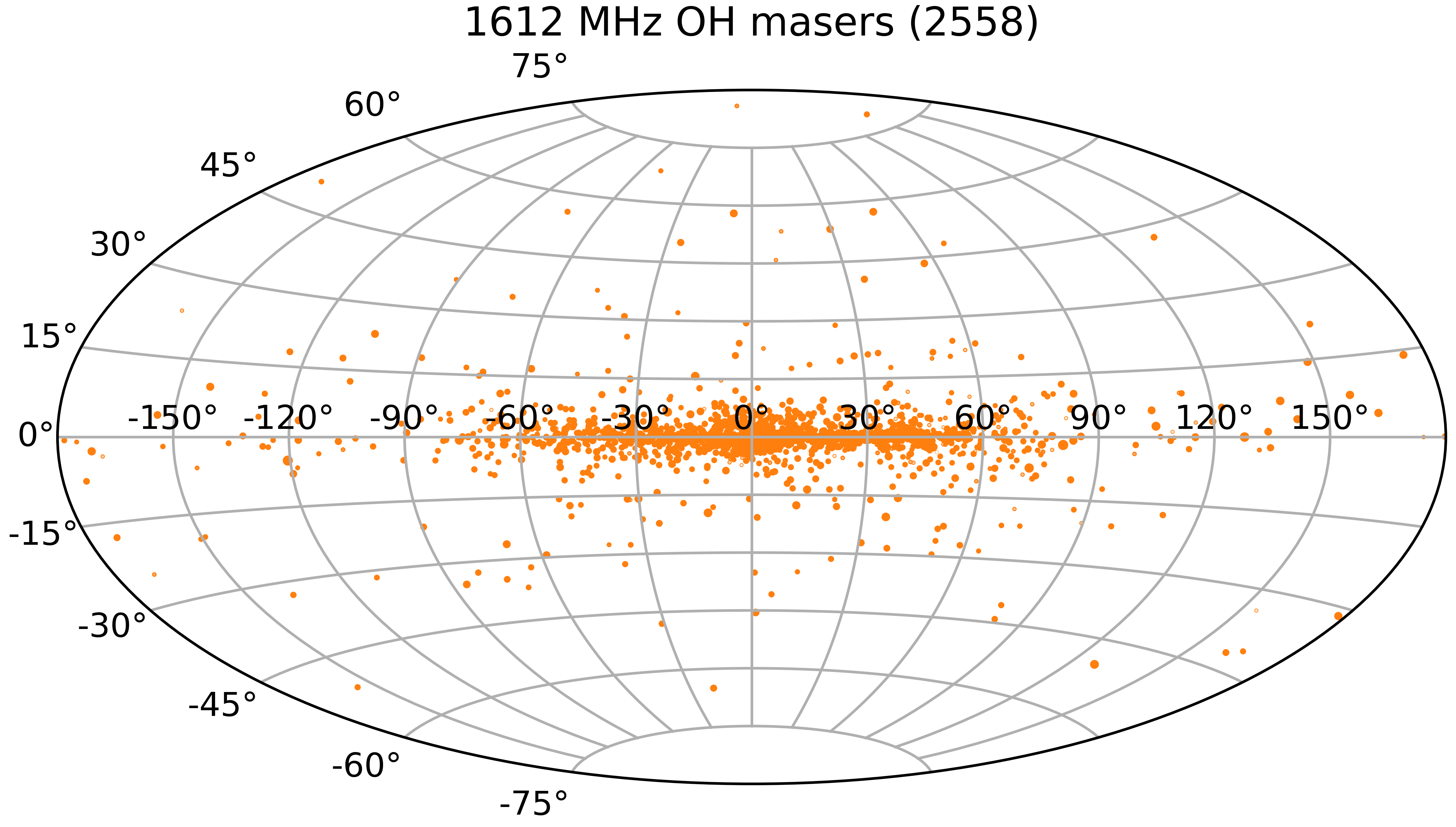Currently in the astronomy there is a trend to use large astronomical catalogs and databases in order to study different classes of the astrophysical objects. The recent development includes databases of exoplanets (EXO.MAST, Exoplanets.org), The Mikulski Archive for Space Telescopes (MAST) focused on scientific data sets in the optical, ultraviolet, and near-infrared parts of the spectrum, and others. All these databases were created with the focus on some specific phenomena, wavelength of detection or class of an astronomical object.
Water masers provide us with unique information on the properties of the interstellar medium. However, the database of water masers is still missing to date, thus it is not possible to search across the observations of water masers available in literature. For example, while preparing the proposals for observations with single-dish and interferometric facilities, it is important to know the previous observations of some particular sources. The MaserDB project aims to solve the problem of water masers data access through variety of technological solutions, a user-friendly interface and rich opportunities of the SQL-queries.

For creation of the maser database we use the PostgreSQL database management system suitable for large datasets and complex SQL-queries. The database was modified with PgSphere plugin required for work with sky coordinates. Data entry to the database was done using online Vizier archive from the Strasbourg astronomical Data Center and Optical Character Recognition (OCR) system FineReader in the cases when online data is not available. DBSCAN algorithm of Python SCIKIT-LEARN package is used for source grouping. Matching with the external datasets is done with x-match service of the Strasbourg astronomical Data Center. The online web-interface is written in Perl/CGI language with the support of the Javascript (including AJAX technology). Online plots in the web-interface are plotted using Plotly Python Graphing Library. Simbad name resolver used for target search by source name.
Only part of the database structure is shown to illustrate the typical relations between tables:


